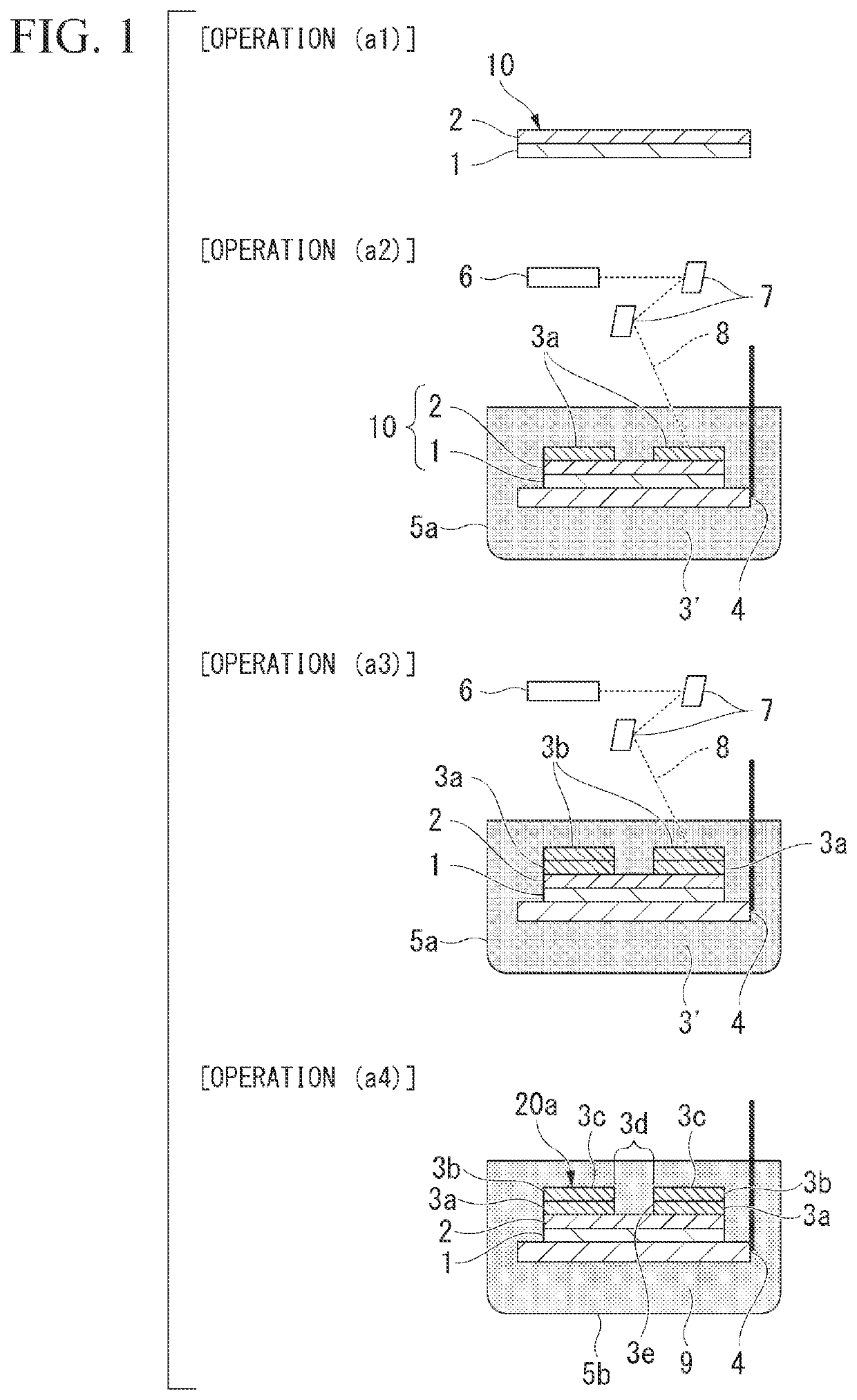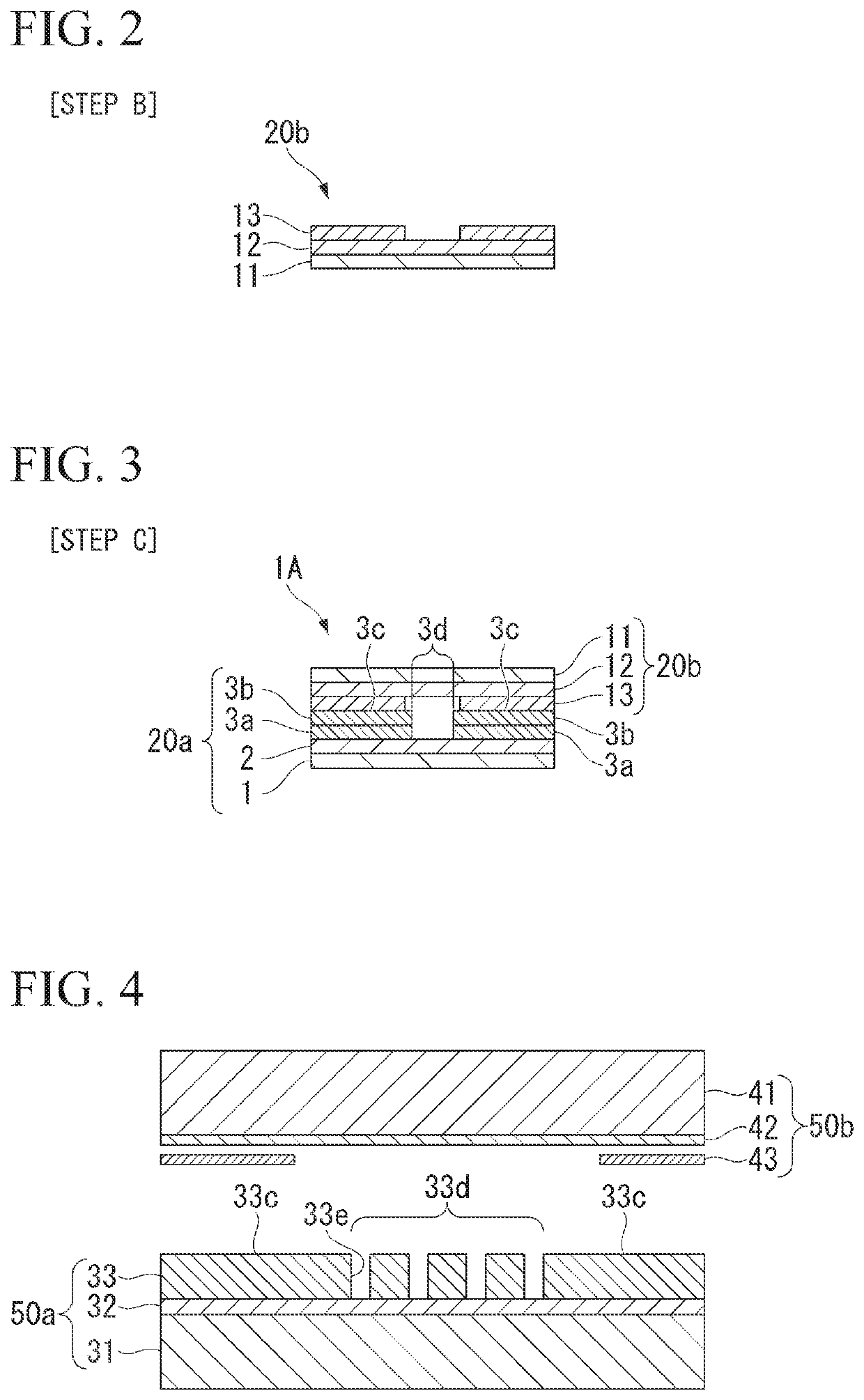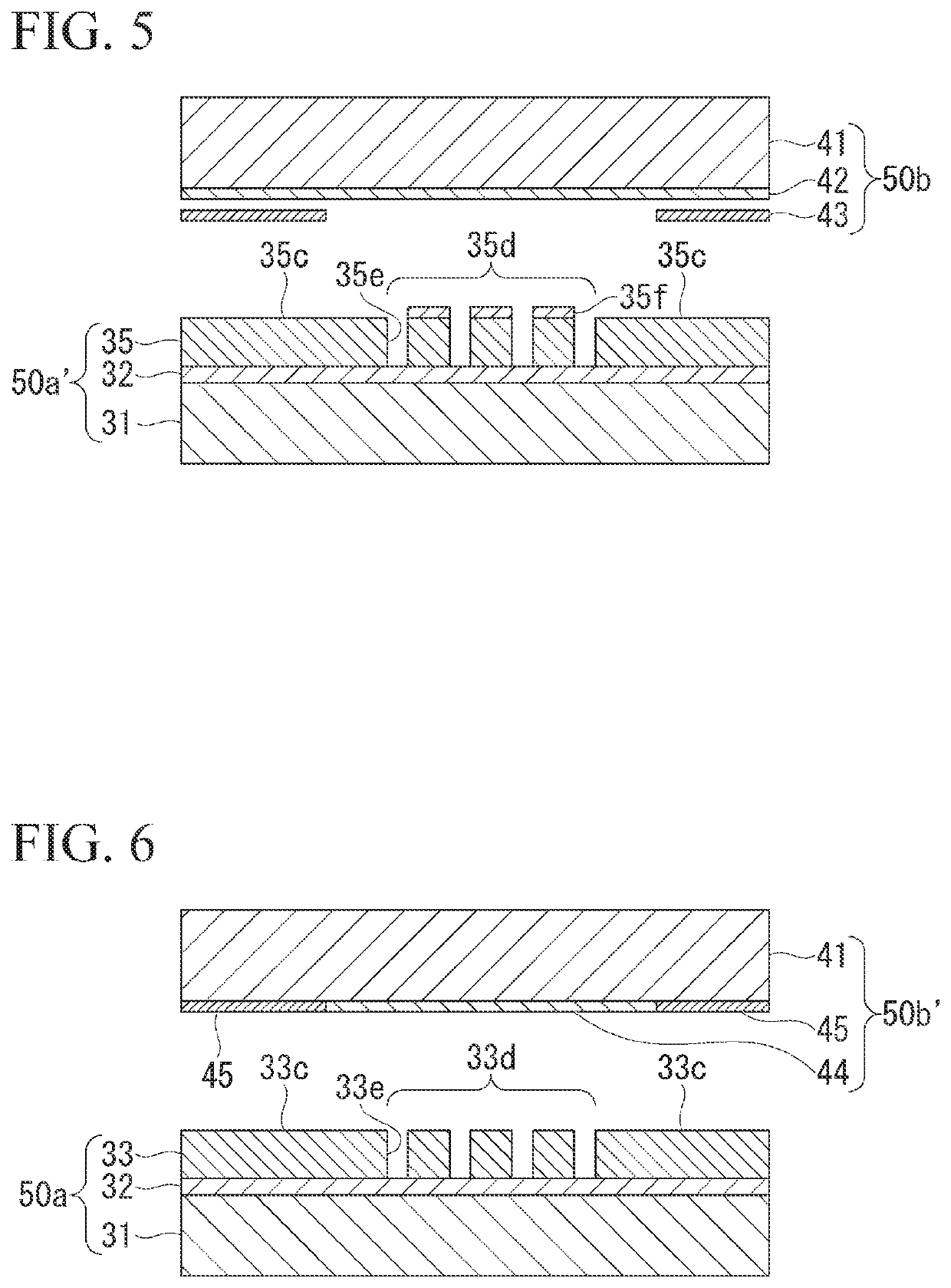Method of producing cell culture chip
a cell culture chip and cell technology, applied in the direction of manufacturing tools, photomechanical equipment, instruments, etc., can solve the problem of easy liquid leakage from the flow path, and achieve the effect of stable production of a fine flow path structur
- Summary
- Abstract
- Description
- Claims
- Application Information
AI Technical Summary
Benefits of technology
Problems solved by technology
Method used
Image
Examples
first embodiment
[0027]As the method of producing a cell culture chip, a method in which a 3D printer is applied to a shaping method may be exemplified. Hereinafter, as the method of producing a cell culture chip according to the embodiment, a production method including the above-described steps A, B, and C, in which the above-described step A includes the following operations (a1) to (a4) will be described.
[0028]The operation (a1) is an operation of forming a photosensitive adhesive layer by coating the substrate having transparency with a photosensitive adhesive to obtain a 3D printing substrate.
[0029]The operation (a2) is an operation of selectively irradiating a photosensitive shaping material layer obtained by film-forming a photosensitive shaping material on the 3D printing substrate with ultraviolet rays to selectively cure the photosensitive shaping material layer.
[0030]The operation (a3) is an operation of further film-forming a photosensitive shaping material, allowing a photosensitive sh...
examples
[0188]Hereinafter, the present invention will be described in more detail with reference to examples, but the present invention is not limited to these examples.
[Production Example 1] Production of Cell Culture Chip
[0189]As a microflow path chip for a cell assay, a cell culture chip including a microflow path structure (X) having a hollow structure illustrated in FIG. 7 was produced in the following manner.
[0190]1. Preparation of Cell Culture Flow Path Substrate: Step A
[0191](1-1) Preparation of First Photosensitive Adhesive
[0192]The raw materials listed in Table 1 below were sufficiently stirred to obtain a uniform solution, thereby obtaining a first photosensitive adhesive.
TABLE 1Name of raw materialParts by massARONIX M313 (manufactured by Toagosei Co., Ltd.)100IRGACURE 184 (manufactured by BASF SE)3Propylene glycol monomethyl ether acetate (PGMEA)100
[0193](1-2) Preparation of 3D Printing Substrate
[0194]Next, a surface (an easy-adhesion treated surface) of a lubricative layer 102...
PUM
| Property | Measurement | Unit |
|---|---|---|
| glass transition temperature | aaaaa | aaaaa |
| thickness | aaaaa | aaaaa |
| thickness | aaaaa | aaaaa |
Abstract
Description
Claims
Application Information
 Login to View More
Login to View More - R&D
- Intellectual Property
- Life Sciences
- Materials
- Tech Scout
- Unparalleled Data Quality
- Higher Quality Content
- 60% Fewer Hallucinations
Browse by: Latest US Patents, China's latest patents, Technical Efficacy Thesaurus, Application Domain, Technology Topic, Popular Technical Reports.
© 2025 PatSnap. All rights reserved.Legal|Privacy policy|Modern Slavery Act Transparency Statement|Sitemap|About US| Contact US: help@patsnap.com



